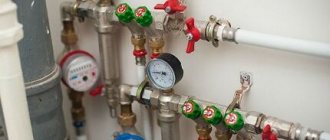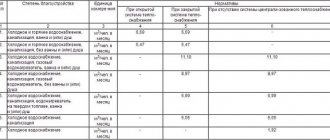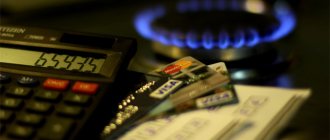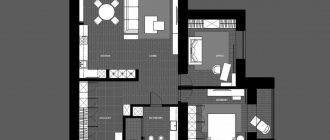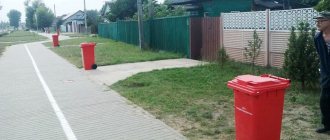When generating payment receipts, utility services use approximate indicators calculated on the basis of average statistics on the use of water resources separately in the territory of each subject of the Federation. These are certain norms of water resource consumption per person per month. They apply equally to residential and non-residential premises that do not have meters. Additionally, the standards are taken into account in case of long-term evasion of submitting readings from computing devices (over 3 months) while the meter is under repair.
Average water consumption per person per month
The average amount of water consumed per person can vary greatly.
Read also: How to leave your parents
This depends on several factors:
- climate zone of residence;
- seasons and peak periods;
- technical equipment of housing;
- serviceability of devices and compliance with their requirements;
- people's personal preferences.
So, in the southern regions more water is used than in the northern ones, the same applies to summer time.
The presence of a dishwasher and washing machine greatly increases water consumption, while a two-button flush tank helps save up to 20 percent of water resources. Leaking devices increase water costs by 15-30 percent.
Applicable coefficients
If there is an internal water supply and sewerage system, hot water supply, the coefficients range from 1.25 to 1.15 k/hour. Under the same conditions, in the presence of a bathtub and a gas water heater, the coefficient values are from 1.2 to 1.15 k/hour. The situation is somewhat different with the presence of a bathroom and wood-burning heaters - from 1.4 to 1.2 k/hour. With the presence of internal water supply, but without a bathroom, indicators from 1.6 to 1.4 k/hour are used.
Water consumption standards necessarily include cost items for fire extinguishing. However, since such needs are classified as periodic, the principles of calculation are based on the localization of the fire point and the supply of resources to influence it. Here the specifics of the premises must be taken into account.
Another indicator of standard water volume consumption is the location of a shower or bathtub in the room. Residential houses, which have a built-in water supply and sewerage system, but are not equipped with a bathroom, are designed to consume from ninety-five to one hundred and twenty liters of water per day. This is an indicator of water use per person. If a similar house has a bathroom, as well as devices for heating the water resource, the norms increase to one hundred and eighty liters per day.
Standard cold water per person without the use of a water meter
Before water standards per person were introduced, general house flow meters were installed. With their help, the amount of water consumed by the residents of the entire house was determined. This amount was then divided by the number of apartments in the building. This method was not entirely fair for the population, since some people spent less resources, while others spent more.
Therefore, standards were introduced. For one person over a thirty-day period, the standards for cold water are 6.935 m3. If you divide this amount by 30, you get approximately 200 liters of water for one day. To make it clearer, the volume of a standard bath is about 250 liters. Not all people take it daily. Therefore, we can conclude that these standards are very high, even if a person uses plumbing every day.
Calculation of water balance
The water balance must take into account all the needs of the enterprise (industrial and domestic), as well as storm water, if any.
Production needs of the enterprise
Calculation of water consumption for the production needs of an enterprise is made on the basis of water consumption and wastewater disposal standards.
Water consumption rate is the optimal amount of water required to meet the needs of a specific water consumer (for example, a farm animal) or a production unit (for example, a tractor, an agricultural machine). Units of measurement: l/day, m3/h, l/t, etc.
Water consumption standards are presented in technological regulations, equipment passports, boiler house passports. It is also possible (and necessary!) to use the Integrated standards for water consumption and wastewater disposal for various industries (M.: Stroyizdat, 1982).
Wastewater disposal standards are usually presented in the same documents, and only the percentage of the volume that goes to the wastewater outlet/wasted/remains in the product may be indicated. Losses include evaporation and wind drift. If water remains in the product (for example, concrete production), consumptive water consumption can be added. For convenience, the calculation can be shown in the form of a table. 2.
note
It is not necessary to format the calculation in a table. The main condition is to confirm the standards used, i.e. Provide links to technological regulations, equipment passports, regulatory documents.
Initial data for calculation:
• number of workshops and production equipment;
• technological regulations, passports;
• number of hours of equipment operation.
As for the circulating water supply system, the norms (percentage of the total volume) for its replenishment should also be specified in the technological regulations.
Similar to the calculation of water consumption, the calculation of water disposal is carried out (Table 3). You can combine both calculations into one table.
The calculation of water consumption and wastewater disposal for boiler houses deserves special attention. Information for calculation can be taken from boiler passports (power, number of operating hours per year, etc.) and technological regulations. In the absence of these documents, you can use a standard project suitable for a given boiler room.
Household needs of the enterprise
Calculation of water consumption and drainage for the household needs of the enterprise is carried out on the basis of SP 30.13330 “SNiP 2.04.01-85* Internal water supply and sewerage” (hereinafter referred to as SP 30.13330). Appendix A to SP 30.13330 presents the estimated costs of water and wastewater for production workshops, administrative buildings, canteens, laundries, laboratories, etc. It is generally accepted that water consumption in this case is equal to water disposal. The calculation is carried out similarly to the calculation of water consumption for production needs.
Initial data for calculation:
• number of employees of the enterprise: engineering and technical workers, hot and cold shops;
• number of dishes in the dining room, kilograms of linen in the laundry and other information in accordance with SP 30.13330.
Storm water
Calculation of storm water can be performed using SP 32.13330.2012 “Sewerage. External networks and structures”, in section. 7.2 of which the necessary formulas and coefficients are given.
Initial data for calculation:
• areas of various surfaces from which runoff is collected:
– roofs and asphalt concrete coverings;
– cobblestone or crushed stone pavements;
– city blocks without road surfaces, small squares, boulevards;
– lawns;
– blocks with modern buildings;
– medium-sized cities;
– small cities and towns;
• number of days in warm and cold periods;
• amount of precipitation in warm and cold periods.
Tariffs for water supply and sanitation in Moscow
Since the standard charging of cold water and hot water differs in different regions, Moscow residents use water according to the standards established by the Order of the Department of Economic Policy and Development of the City of Moscow and the Decree of the Moscow Government “On approval of prices, rates and tariffs for housing and communal services for the population.”
The established standard volumes for the month are:
- 4.7 cubic meters of hot water;
- 6.9 cubic meters of cold water;
- 11.7 cubic meters of drainage.
Muscovites pay for a given amount of consumption according to established tariffs:
- RUB 173.02 for 1 cubic m hot water;
- 35.4 rub. for 1 cubic m cold;
- 21.9 rub. for 1 cubic m of drainage.
This rate is set per person. When 2 or more people live in an apartment, it is multiplied by the appropriate number.
Calculator
On the website of the Federal Antimonopoly Service of Russia there is access to a service for calculating the cost of housing and communal services in all regions according to the tariff schedule and standards for hot and cold water consumption provided by municipal tariff regulators. These norms must be drawn up by municipal authorities in accordance with the norms of Federal Law No. 210, which regulates the tariffing of public water supply services.
The calculation service allows you to correlate tariffs for services for the population, carried out according to regional payment documents, with the grid of established federal tariffs and consumption standards for water supply services. This option will allow consumers to locally control tariffs and standards for compliance with all-Russian values adopted under the law on state regulation of tariffs.
How to save water in an apartment
When a water meter is not installed, people pay much more than they actually spend. After all, the standards established by law are very high and do not correspond to the real needs of consumers. Such standards are established to compensate for water losses, which can be caused by various reasons (accidents, worker negligence, etc.).
For example, a pipe burst, it was not immediately noticed, and then it was not immediately repaired. As a result, water flowed freely for several days. The loss of resources can be very significant. And payments for the negligence of workers will be made by the residents of the house - the water standard can be increased by 2 times.
In reality, the amount of water used per month is 2-4 times lower. Even if you do not save water, its consumption reaches 4 m3 of cold and 3 m3 of hot.
Therefore, it is much more profitable to install a water meter. This way it will even be possible to reduce the consumption of water resources, avoiding unnecessary waste. Due to this, you can save a lot. Moreover, the savings can be quite impressive - up to several hundred rubles per month per person. And if several persons are registered in the apartment at once, then this amount increases a couple of times.
There are a number of simple rules that will help save consumed resources:
- Take a shower, not a bath. If you fill the bathtub to the top, up to 200 liters of liquid will be lost at a time. According to statistics, much less water is wasted when taking a shower - up to 50 liters.
- Try to be in the shower less. You don't need to take a long shower in the morning to perk up. You can do this by drinking a cup of coffee. Moreover, it is necessary to take into account that prolonged exposure to hot water can negatively affect the condition of the skin.
- Run the dishwasher with a full load. If you fill it only halfway, a lot of excess liquid will be wasted. And for maximum savings, you can wash dishes in a basin.
- Run only a filled washing machine. But you shouldn’t overcrowd it, as this could quickly cause the device to fail. It is recommended to use modern washing equipment. New machines use 50% less water than older models.
- Install a wastewater recycling system. Purified water can be used to water flowers, wash areas, and so on.
- Monitor the functioning of plumbing fixtures. If a leak is detected, it must be repaired immediately. For example, a leaking toilet can generate up to 16,000 excess water per year.
- Turn off the tap while brushing your teeth and turn it on only to wash your toothbrush.
- Place the filled bottle into the toilet cistern. This method will allow you to save a lot of money.
- Use an economical toilet flush. Usually there are two buttons on the drain tank - one larger, the second smaller. You need to press the small one so that less liquid is drained.
- To wash your car, use a bucket of water rather than a hose. And then, to rinse, you can water the car with a hose.
It is also recommended to check your water meter readings regularly. This will allow you to monitor the amount of water used. These simple steps will help you use less water and lower your monthly utility costs. But it’s wiser to save hot water, because cold water costs a penny.
Thus, charging for water using a water meter is much more profitable than charging according to standards. Indeed, in this case, residents pay only for the resources used, regardless of the number of people registered in the apartment. Installation of the meter is carried out at the personal expense of the owner of the premises. In houses with a single central riser, it is enough to install two devices - separately for hot water supply and hot water supply. If you live in an apartment building where there are two central risers, you will have to install 4 meters - two for hot water supply and two for hot water supply.
After installing the device, you will need to call a housing and communal services representative to complete the accounting. As a result, you will have to spend money on installing the meter. However, in the future, all costs will pay for themselves through savings on utility bills. The greatest savings will be observed in the summer, when many people go to the country. But if there is no meter, you will have to pay a fixed amount, even if there is no one in the apartment for an extended period of time.
Calculation of water balance - Vodokanal of Klin and Klinsky district
Balance of water consumption and water disposal (water balance) - a document containing information on the average daily volume of water received by the subscriber from all sources of water supply, and (or) on the volume of wastewater discharged by the subscriber into the centralized sewerage system, including information on the distribution of the volume of wastewater for sewer outlets (clause No. 2 of Section 1 of the Rules for cold water supply and sanitation, approved by Decree of the Government of the Russian Federation of July 29, 2013 No. 644 (current edition) (hereinafter referred to as the Rules). The volume of water consumption of an organization in the water balance is calculated on the basis of water consumption standards established by the joint venture 30.13330.2012, depending on the number of personnel, type and duration of water use, passports of water-consuming equipment, production technology and other specific needs of the organization; indicating the purposes of using cold water and the distribution of volumes of connected load according to the purposes of use (for the subscriber’s own needs, fire extinguishing, periodic needs, filling and emptying basins, receiving surface wastewater), as well as with the distribution of the total volume of wastewater by sewer outlets (in percentage).
The calculation results are filled out in the water balance form (download) SP 30.13330.2012.
The water balance is one of the necessary documents for concluding an agreement for the supply of drinking water and the reception of waste water with the organization of water supply and sewerage services (clause No. 17 of the Rules).
The approval of the water balance is valid until the end of the agreement concluded between the subscriber and JSC Vodokanal. When there is a change in the volumes of water used from all water supply sources or the volumes of wastewater discharged, the water balance is re-agreed.
The water balance is developed by the subscriber independently, or on behalf of the subscriber by a contractor that has licenses to carry out design work on water supply and sewerage. And then it is submitted for inspection to the production and technical department of JSC Vodokanal with an application (download: for legal entities, for individual entrepreneurs) and the documents necessary to prepare for concluding an agreement.
The water balance must be certified by the person signing the agreement (signature and transcript of the signature) and the seal of the organization. If there is no seal (individual entrepreneurs or citizens carrying out commercial activities), the person certifying the water balance, in addition to the signature and its decoding, writes instead of M.P. “Without seal.”
The production and technical department, together with the subscriber, checks the water balance and then certified by authorized employees of JSC Vodokanal.
Documents required for preparing a water balance
- Permission to carry out this type of activity.
- Certificate of registration of a legal entity with the tax authority at its location in the Russian Federation.
- Certificate of state registration of a legal entity.
- Extract from the Unified State Register of Legal Entities (USRLE).
- For catering establishments and food production - a copy of the enterprise area plan.
- Articles of association.
- Certificate of ownership or rental agreement for premises.
- A certificate indicating the total number of employees. Determine the number of workers per day and their work schedule.
- Scheme-act (example) of delimitation of the balance sheet ownership of external water supply and sewerage networks between Vodokanal CJSC and the subscriber, or internal water supply and sewerage networks between Zhilservice LLC and the subscriber.
- Diagram (example) indicating the exact location of the control well for sampling wastewater on sewer networks, which is confirmed by an act (download) certified by JSC Vodokanal and the subscriber.
Instructions for calculating water balance
The calculation of the water balance is carried out on the basis of Appendix No. 3 (download) SP 30.13330.2012.
If, when calculating the water balance, standards other than man-hours are indicated (for example, the number of dishes for restaurants, kilograms of linen for laundries, etc.), then in column No. 12 the default value should be left as 8
Click on instructions to enlarge
Average consumption figures for the Russian Federation
The norm of cold water per person is a variable value, and in different regions of Russia it differs significantly. Here is a list that includes statistics from the largest regions of the country regarding water consumption standards per citizen:
- Yekaterinburg - 4.25 m3.
- Moscow - 6.89 m3.
- St. Petersburg - 3.35 m 3.
- Perm region - 5.78 m3.
- Leningrad region - 4.90 m3.
- Novosibirsk - 5.91 m3.
The rate of hot water per person is approximately 166 liters per month, while about 233 liters of cold water are used. The Ministry of Construction claims that the average Russian uses water and plumbing fixtures the following number of times each month:
- using the toilet - 118 times;
- washing in the shower - 25 times;
- washing dishes - 95 times;
- takes a bath - 4 times;
- sink use - 107 times.
General household needs, which include laundry and wet cleaning, amount to about 31 times. Based on the above data, you can understand why the norm of cold water per person is higher than hot water. The cost of supplying it is cheaper, and therefore residents of households will use it in larger quantities.
How to check the readings?
In a situation where there are doubts about the water meter readings for the past month, you need to check whether the water meter is really working (what to do if the meter is broken?).
Before calling a technician, you should check the operation of the water meter yourself.:
- write down the meter readings in liters – the last 3 digits are red;
- a container of known volume should be filled with water up to the mark indicating its capacity;
- record the readings and repeat the procedure three times;
- the difference in displacement on the meter before and after filling the container should correspond to the collected volume of water.
If the readings and the accumulated volume do not correspond, then you need to submit an application for dismantling, verification, repair or replacement of the meter by the water supply organization . Heat supply companies are responsible for the supply of hot water, and the city water utility service is responsible for the supply of cold water.
How to save your family budget when paying for water
To reduce resource consumption, consumers can resort to the following measures:
- install individual metering devices;
- use special equipment that reduces the amount of water consumed.
When installing a home water supply, it is important to optimally select the diameter of the pipe, which also affects flow rates.
The listed measures are equally justified for residents of MKD apartments and owners of private housing.
With the meter installed
If the consumer took care of installing a meter, the utility bill for this item will be significantly reduced. The explanations are simple:
- residents pay for consumed resources, having the opportunity to reduce payments, saving costs;
- the use of upward adjustments when calculating prices is excluded;
- if no one lives at home for some time, there is no expense, as well as payment.
Taking into account the above factors, the amount in bills will be halved.
Use of special equipment
The use of such technical measures and equipment will help save resources:
- a shower cabin installed instead of a bathtub - the volume of water for these needs will be halved;
- purchased water intended for preparing daily meals - in a month you can reduce consumption by 50 liters;
- dishwasher - saving a fifth of the resources for washing dishes;
- automatic washing machine - with an increase in washing volumes, carried out less frequently than before, the volume of water consumed can be reduced by up to 10 percent;
- an economical toilet cistern operating in on-off mode and economical shut-off valves - consumption will decrease by 15 percent.
It is important to understand in which situations you can reduce consumption by being smart about your use of resources. If you turn off the tap while brushing your teeth, you save 5-15 liters of water every minute.
If you approach resource consumption and household organization wisely, you can save significantly on utility bills. Knowledge of consumption standards and calculation of payment tariffs will allow you to find ways to reduce water costs.
It should be remembered that payment according to standards is a deliberate overstatement of the amount of payments, so installing a meter is the only correct solution to reduce the amount of bills from utility organizations.
How many cubic meters of water does a washing machine use?
We are used to being guided by our eyes. Modern washing machines consume from 40 to 80 liters of water per cycle. Thus, the average is approximately 60 liters. If your machine consumes more, it means either you are using it incorrectly or there is some kind of malfunction.
Interesting materials:
How many errors are allowed in an electronic train ticket? How many days are left until school ends? How many weeks are left until September 1st? How many southern white rhinos are left? How many acute angles are there in an obtuse triangle? Why? How long is it from Moscow to Novgorod? How many orders do mammals have? How many pairs of socks does a newborn need? How much paraffin is needed for a candle? How old is singer Motu?
Considering other parameters
Consumption rates according to SNiP described in the literature and on the Internet may differ from actual ones.
This indicator is influenced by a number of factors.
The main ones:
- The purpose of taking a shower. If you need to wash thoroughly, this will add 100-150% to the average norm. And in order to take a refreshing shower on a hot summer day, the equivalent of one 10-liter bucket is enough.
- Technical condition of plumbing. Now new shower sets are being produced with horns (watering cans), which allow you to hold elastic jets of water, regulate pressure and temperature automatically and at the same time significantly save fluid consumption. Old designs, for which regulatory data were written, provide less resource savings. If there is a defect in the equipment, there is a high probability that water will flow out of the system even when the tap is turned off.
- If you follow the recommendations of turning off the water flow during soaping, leaving the shower for a certain period and immediately after the end of the procedure, then these actions provide additional savings in liquid consumption.



